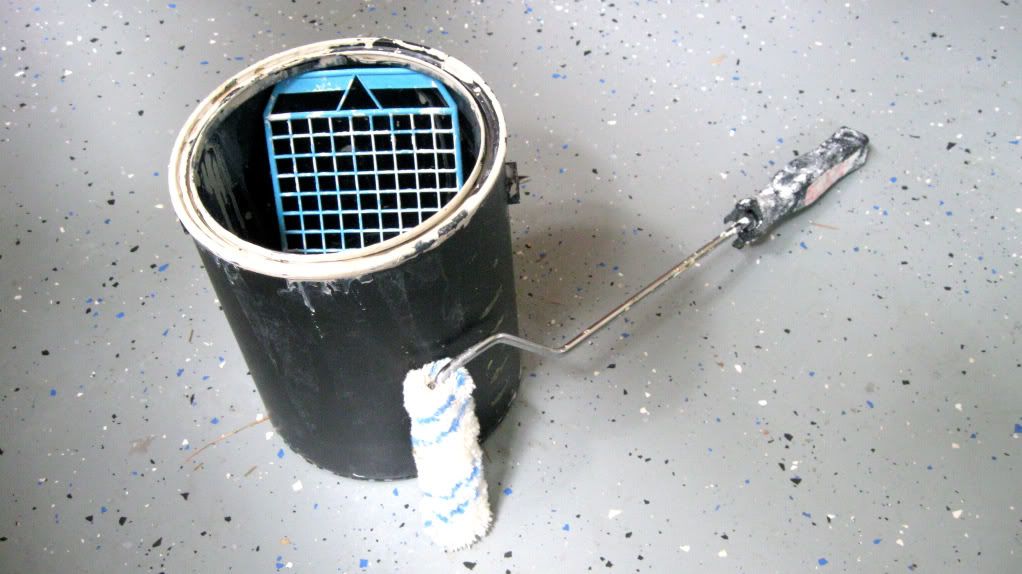 |
| This little roller is one of my handiest tools for staging because it makes painting small areas easy. The blue grid fits into a gallon can. |
Using a small roller after cutting around the hinges with a brush makes the work go quickly.
Big is not always better. The 4.5-inch roller is a handy tool to have. The brand I use comes from www.whizzrollers.com and is called a Whizz.
A Whizz is not suitable for painting large areas, but for things like these, it’s perfect:
- Interior doors of all kinds (solid wood, hollow core, or hollow six panel)
- Cabinet doors and cabinet interiors
- Exterior metal and wood doors
- Shelves from closets or fixed bookshelves
- Closet walls
- Pickets on exterior porches and decks, and balustrades on interior stairwells
- Walls behind toilets
While I’ve been whizzing, Mr. Lucky has finished painting all the trim, including interior doors, with white semi-gloss.
Trim always gets painted first, then the walls.
As soon as the doors were dry, we hung them back up, replacing the old brass hinges and door knobs with new brushed nickel ones. Cost per door: about $10 for both knob and three hinges. Good bang for the buck!
Lowes delivered the new six-foot sliding patio door, so the Mr. Lucky and Mr. Carpenter tore out that old double door to the deck, and wrestled the new into place. I make it sound easy, but I could tell from their muttered expletives that it was not. Once positioned and trimmed out, the difference is striking. Beautiful.


No comments:
Post a Comment